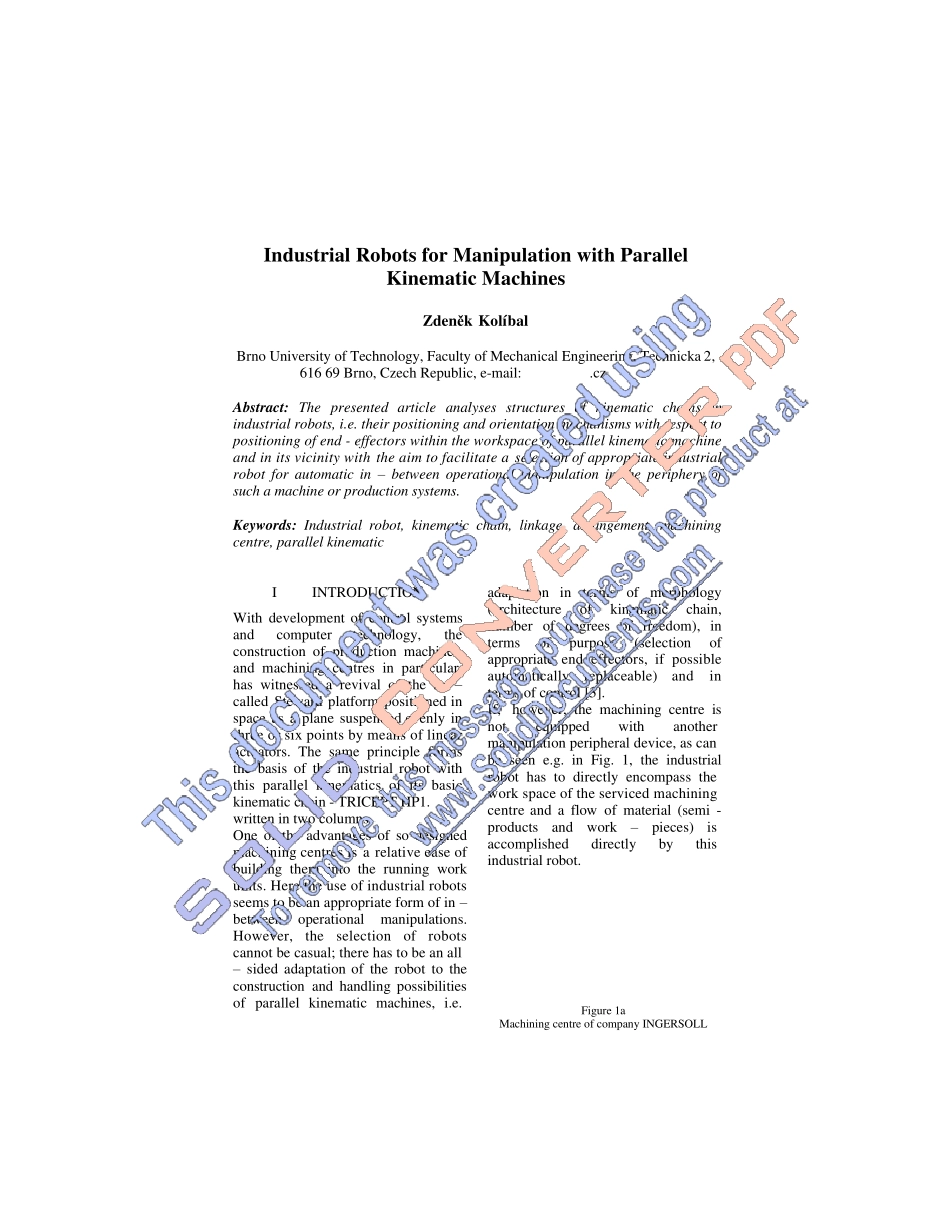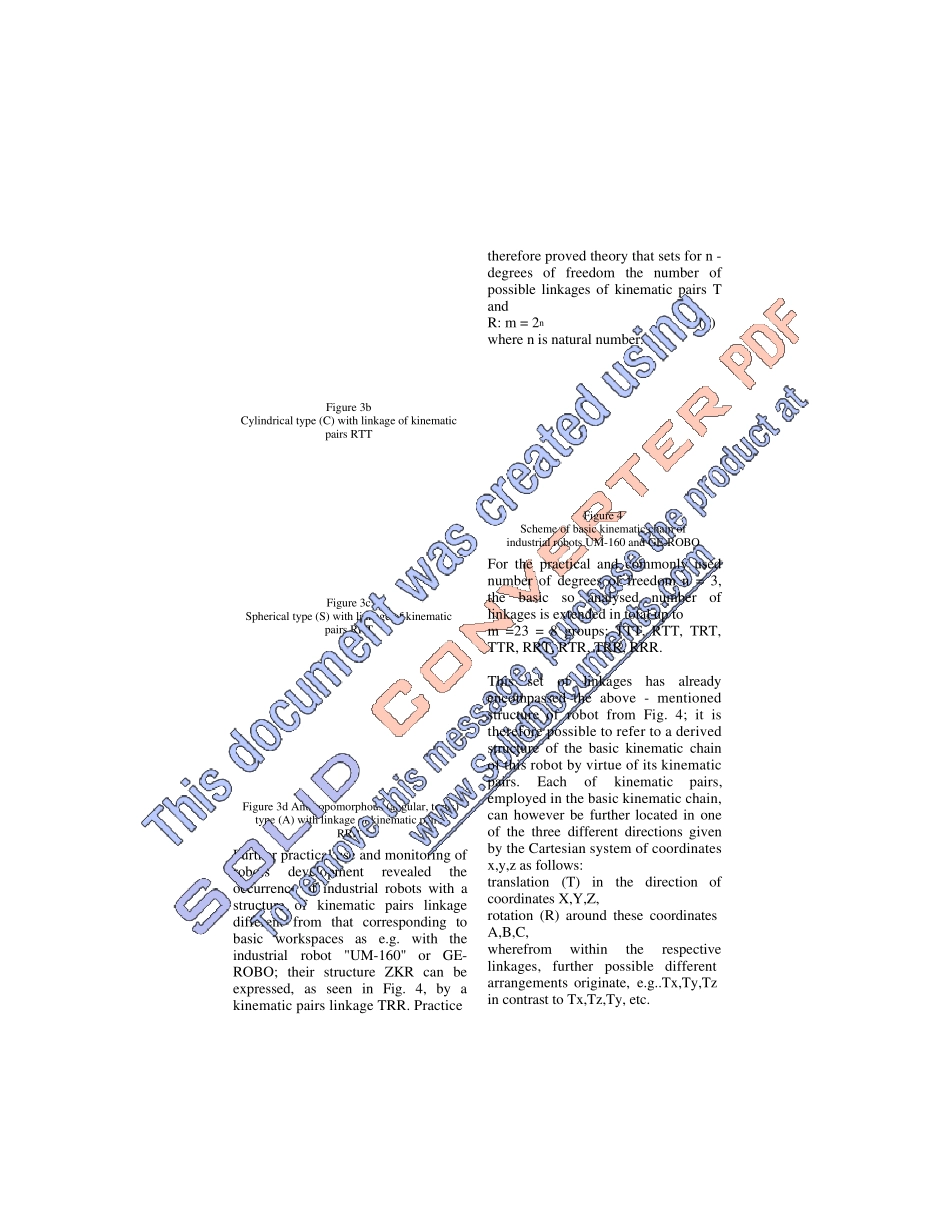Industrial Robots for Manipulation with Parallel Kinematic Machines Zdeněk Kolíbal Brno University of Technology, Faculty of Mechanical Engineering, Technicka 2, 616 69 Brno, Czech Republic, e-mail: *****************.cz Abstract: The presented article analyses structures of kinematic chains in industrial robots, i.e. their positioning and orientation mechanisms with respect to positioning of end - effectors within the workspace of parallel kinematic machine and in its vicinity with the aim to facilitate a selection of appropriate industrial robot for automatic in – between operational manipulation in the periphery of such a machine or production systems. Keywords: Industrial robot, kinematic chain, linkage, arrangement, machining centre, parallel kinematic I INTRODUCTION With development of control systems and computer technology, the construction of production machines, and machining centres in particular, has witnessed a revival of the so – called Steward platform positioned in space as a plane suspended evenly in three or six points by means of linear actuators. The same principle forms the basis of the industrial robot with this parallel kinematics of its basic kinematic chain - TRICEPT HP1. written in two columns. One of the advantages of so designed machining centres is a relative ease of building them into the running work units. Here the use of industrial robots seems to be an appropriate form of in – between operational manipulations. However, the selection of robots cannot be casual; there has to be an all – sided adaptation of the robot to the construction and handling possibilities of parallel kinematic machines, i.e. adaptation in terms of morphology (architecture of kinematic chain, number ...


